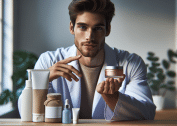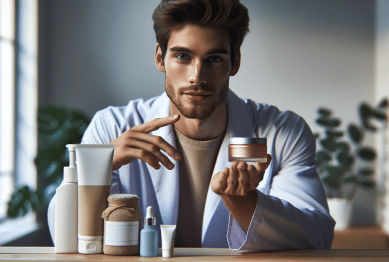Explore the science-backed benefits of daily sunscreen and how incorporating SPF into your wellness routine helps maintain healthy skin. This guide unpacks myths, routine tips, and expert perspectives—showing how protective habits support long-term skin vitality.
Understanding Why SPF Is Essential Every Day
Many people only reach for sunscreen when headed to the beach or pool, but research reveals daily SPF is crucial. Ultraviolet (UV) radiation affects skin even on cloudy days, leading to signs like uneven pigmentation and early wrinkling. By wearing sunscreen each morning, protection becomes routine and helps defend against photoaging, hyperpigmentation, and loss of elasticity. The American Academy of Dermatology consistently emphasizes sunscreen as a primary strategy for preserving youthful, healthy skin. Invisible UV exposure happens through glass, during everyday tasks like driving or sitting near windows. Even if a person doesn’t experience immediate sunburn, the cumulative effects of sun exposure accelerate aging. The science is simple—consistent SPF use reduces visible damage over the years.
One persistent myth is that deeper skin tones do not require sun protection. In fact, research confirms all skin types are affected by UV rays, experiencing risks such as dark spots, uneven tone, or skin cancer. Regular use of broad-spectrum SPF shields delicate skin cells and supports overall wellness by limiting unnecessary oxidative stress. According to dermatologists, applying at least SPF 30 every morning is recommended—regardless of weather, season, or skin tone. Adopting this habit from a young age yields long-term results and helps individuals make empowered choices about their self-care routines.
Education plays a key role in changing public perceptions. Many users appreciate discovering that sunscreen is not just about avoiding sunburn but acts as an essential daily barrier. Social media and expert campaigns increasingly promote sunscreen as vital for holistic beauty and wellbeing. As more evidence mounts around the link between sun exposure and common skin concerns, public health figures encourage year-round application. With minimal effort, anyone can gain lasting rewards by prioritizing SPF in their morning rituals.
How SPF Supports Anti-Aging and Prevents Damage
Collagen breakdown is an unavoidable part of aging—but sun protection dramatically slows the process. UVA and UVB rays deplete collagen, a key protein responsible for firm, plump skin. Once collagen is weakened, lines and sagging appear more quickly. Studies from major dermatology institutions reveal daily SPF use fosters smoother texture and reduces common age indicators. Most importantly, sunscreen forms a protective layer that absorbs or reflects damaging rays, preventing them from penetrating deep into the skin. Individuals who incorporate sunscreen with antioxidants—like vitamin C—gain enhanced defense against environmental stressors.
Sun-induced spots, often called ‘sun spots’ or lentigines, can impact self-confidence and are notoriously stubborn to treat. Research highlights that consistent sun protection is one of the simplest, least expensive ways to prevent these marks from appearing. By blocking both UVA (which accelerates aging) and UVB (which burns), broad-spectrum SPF acts like an invisible umbrella. Over time, those committed to this daily practice often notice less discoloration, a more uniform skin tone, and reduced need for corrective treatments. It’s a long-term strategy with visible returns.
Sun damage is cumulative—repeated, minor exposures add up, which makes habitual sunscreen far more effective than sporadic application. Advances in skin science show integrating daily SPF reduces the likelihood of needing more intensive procedures later in life, such as laser therapy or chemical peels. This preventative approach is validated by public health campaigns and supported by dermatologists everywhere, who recommend reapplying SPF during prolonged outdoor periods or after swimming. These smart habits ensure skin remains resilient in the face of daily challenges.
SPF Product Types and Finding What Works for You
Choosing the right SPF product makes compliance simple. There are two main sunscreen types—physical (mineral) and chemical. Physical formulas use ingredients like zinc oxide or titanium dioxide, sitting on top of the skin to reflect rays. These products are ideal for individuals with sensitive or reactive skin. Chemical options absorb UV rays and convert them to heat, often blending seamlessly without a visible residue. Many modern formulas combine both systems, offering broad-spectrum coverage with no compromise on comfort or texture.
Texture, scent, and finish all matter when adding SPF to daily wellness routines. Lightweight gels, creamy lotions, and invisible sprays allow users to tailor protection to their preferences. The best sunscreen is the one consistently applied, whether underneath makeup or as the final step in skincare. Dry or mature skin may benefit from moisturizing, hydrating SPF products; oily or acne-prone types often favor oil-free, mattifying formulations. Tinted sunscreens double as complexion boosters, bridging the gap between self-care and beauty enhancement.
Labels can be confusing, but experts recommend seeking broad-spectrum, water-resistant options with at least SPF 30. For those with allergies or sensitivities, hypoallergenic or fragrance-free products can be valuable. The proliferation of SPF options—from mineral powders to lip balms—reflects growing demand for protective, easy-to-use solutions. Regular reviews from reputable organizations and ingredient-conscious platforms support safe, effective choices for all skin types.
SPF Myths, Facts, and Evidence-Based Insights
Common SPF myths persist, often making individuals hesitate to add sunscreen to their daily regimen. One frequent misconception is that sunscreen is unnecessary indoors or during the winter. Yet, dermatological research confirms UVA rays penetrate windows and remain strong all year. The Skin Cancer Foundation warns that artificial lighting and blue light—emitted from screens—can also contribute to pigment irregularities and premature aging, especially for those who spend extended hours in digital environments.
Misunderstandings about SPF values also abound. Higher numbers do provide more protection, but only up to a limit; experts say that SPF 30 blocks about 97% of UVB rays, while SPF 50 blocks about 98%. No sunscreen offers 100% shielding. Correct application—about one ounce for a full-body adult application—is vital for the labeled effectiveness. Reapplication every two hours, especially after sweating or swimming, is strongly encouraged by dermatologists for sustained safety.
Scientific evidence continuously reinforces the value of daily SPF for every demographic. Studies published by governmental health agencies and academic centers show sharp declines in skin cancer risk and visible aging among those who adhere to regular use. Public health education initiatives embed these facts in guidelines, ensuring consumers are equipped with clear, evidence-based advice. Dispelling myths empowers people to make choices that nurture lifelong skin health and confidence.
Building SPF Into Your Beauty and Wellness Routine
Integrating daily SPF can be seamless. Small habits evolved over time become second nature with supportive cues and reminders. Making sunscreen application the final step after moisturizing and before foundation allows for easy repetition. Many beauty enthusiasts find success by choosing a designated spot for their sunscreen or pairing the habit with another daily ritual, like brushing teeth or styling hair.
Layering products for targeted results is common in modern skincare routines. Physical sunscreen can be patted on over serums and under makeup, making it effortless to protect delicate areas like the neck, chest, and even hands. Some advocates use setting sprays with SPF for touch-ups throughout the day. Prioritizing exposed skin—such as ears, lips, and the tops of hands—ensures complete coverage where needed.
Community support and shared accountability boost compliance. Beauty trends now celebrate ‘dewy’ sunscreen finishes and ‘glass skin’ effects, sparking social media challenges and inspirational reminders. Those who experiment with various application methods—like sponges for a smooth finish or powder sunscreen for midday touch-ups—often report more enjoyable routines. Over time, consistent effort pays off in clearer, more resilient skin, appreciated at every age.
Key Takeaways and Wellness Tips for Lasting Skin Health
Consistent sun protection is one of the simplest but most powerful habits for radiant, age-resistant skin. Evidence from dermatology authorities confirms: regular SPF reduces common complaints like dullness, discoloration, and loss of firmness. Alongside a balanced lifestyle, sunscreen forms the bedrock of comprehensive self-care routines.
Personalization is essential. Some prefer lightweight sprays; others reach for rich creams or tinted options. The wider the choice, the easier it is to find a solution that feels pleasant and fits personal preferences. Building a culture of care encourages people to stick with their new habits, enhancing both appearance and confidence.
Finally, education and awareness truly make all the difference. Ongoing advocacy from wellness influencers, medical professionals, and health agencies has placed SPF at the forefront of beauty and longevity. Armed with science and a commitment to wellness, anyone can unlock smoother, healthier skin with just a few mindful steps each day.
References
1. American Academy of Dermatology Association. (2023). Sunscreen FAQs. Retrieved from https://www.aad.org/public/everyday-care/sun-protection/sunscreen-patient-faqs
2. Skin Cancer Foundation. (2023). How sunscreen works. Retrieved from https://www.skincancer.org/skin-cancer-prevention/sun-protection/sunscreen/sunscreen-faqs-2/
3. Centers for Disease Control and Prevention. (2022). Sun Safety. Retrieved from https://www.cdc.gov/cancer/skin/basic_info/sun-safety.htm
4. National Institutes of Health. (2023). Skin Cancer Prevention. Retrieved from https://www.cancer.gov/about-cancer/causes-prevention/risk/sunlight/skin-cancer-prevention-pdq
5. Harvard Health Publishing. (2021). The science of sunscreen. Retrieved from https://www.health.harvard.edu/staying-healthy/the-science-of-sunscreen
6. Cleveland Clinic. (2022). Sunscreen: Why You Need to Wear it Every Day. Retrieved from https://health.clevelandclinic.org/wear-sunscreen-each-day/









